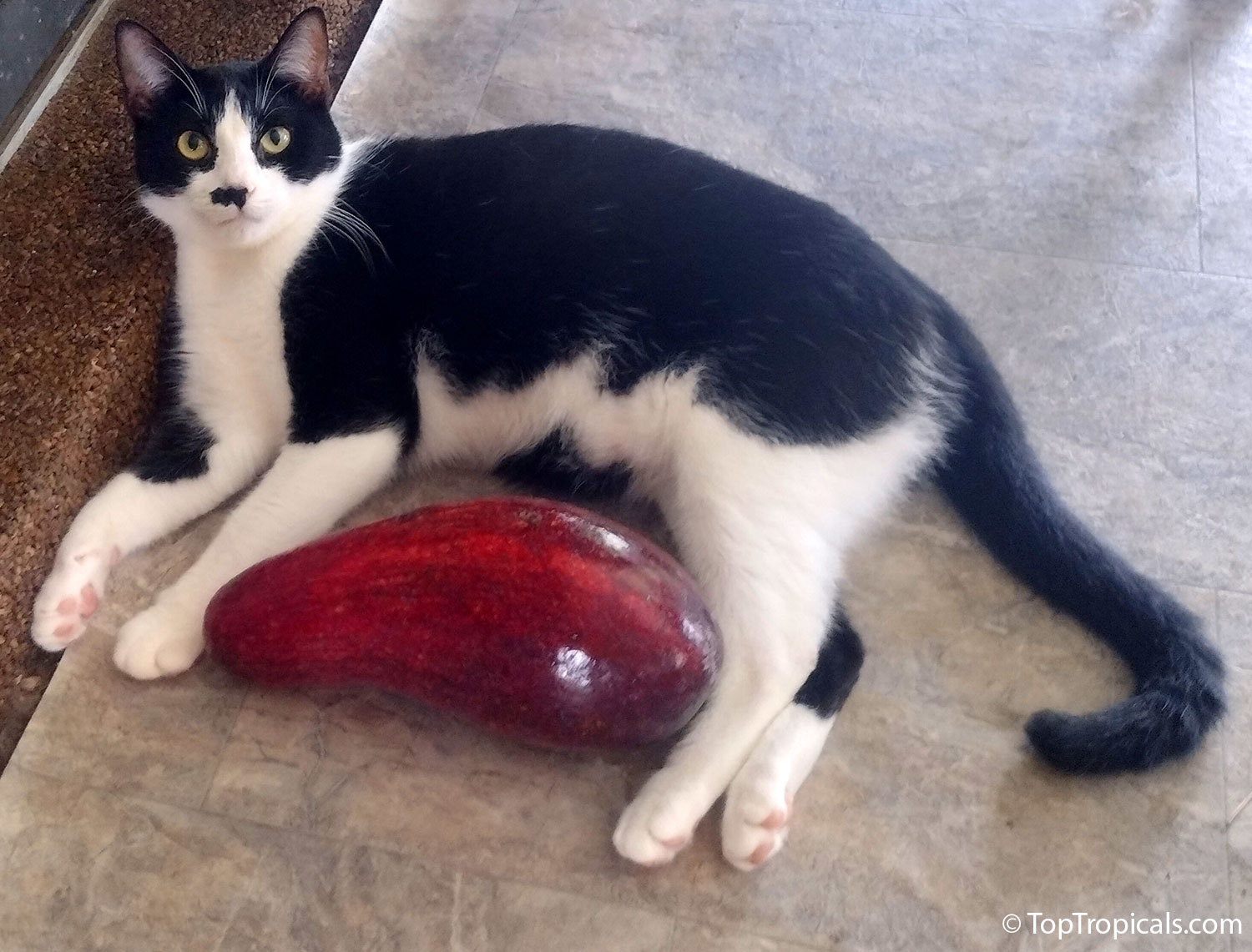Avocado Variety Guide: Snack or Guacamole? Collector's inspiration
Articles > Fruit & Edibles > Avocado Varieties > Avocado Variety Guide
A comprehensive guide to Avocado varieties by:
flower type A or B, tree habit, fruit shape and quality, cold hardiness, origin, season and more!
Buy hardcopy book or download PDF
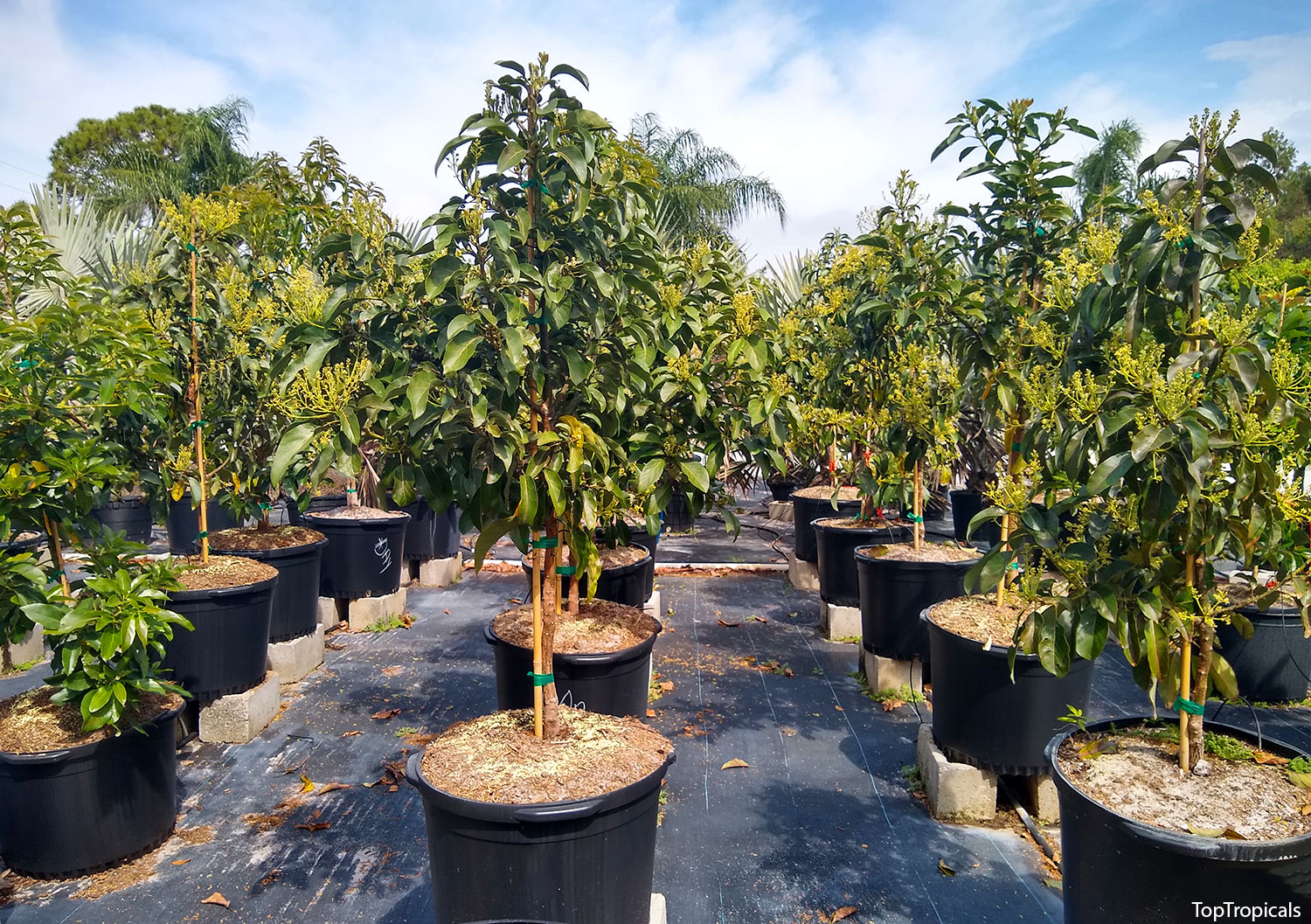
Collector's inspiration
How to select the perfect variety? Is there more than “black” or “green” to it?
Frequently, we hear customers ask, "Do you have the one with small black fruit and bumpy skin?" or “I have avocado with very large green fruit, what variety is it?” What they may not realize is that this basic (but practical!) classification doesn't encompass all the wonderful qualities avocados have to offer. There are numerous hybrids in cultivation, and once you plant your first tree and taste the REAL fruit (not from the grocery store), you'll be eager to explore other varieties. It's a guarantee! While it's true that avocado fruit can vary in "butter" content, most superior varieties are equally delicious. Or perhaps we should say they are so versatile and distinct in taste that you'll start building your collection of these trees, much like fruit enthusiasts do with mango varieties.
In this guide we aim to provide you with a comprehensive overview of avocado varieties and their differences. This will enable you to savor each one and make the most of the incredible array of tastes and textures they offer. Keep in mind that every garden has unique requirements based on climate, temperature, and property size. These factors must be considered before planning your avocado garden. Additionally, many gardeners may wonder about Type A vs Type B classifications and whether they need more than one tree to yield fruit. You'll find all the answers in this Avocado Variety Guide.
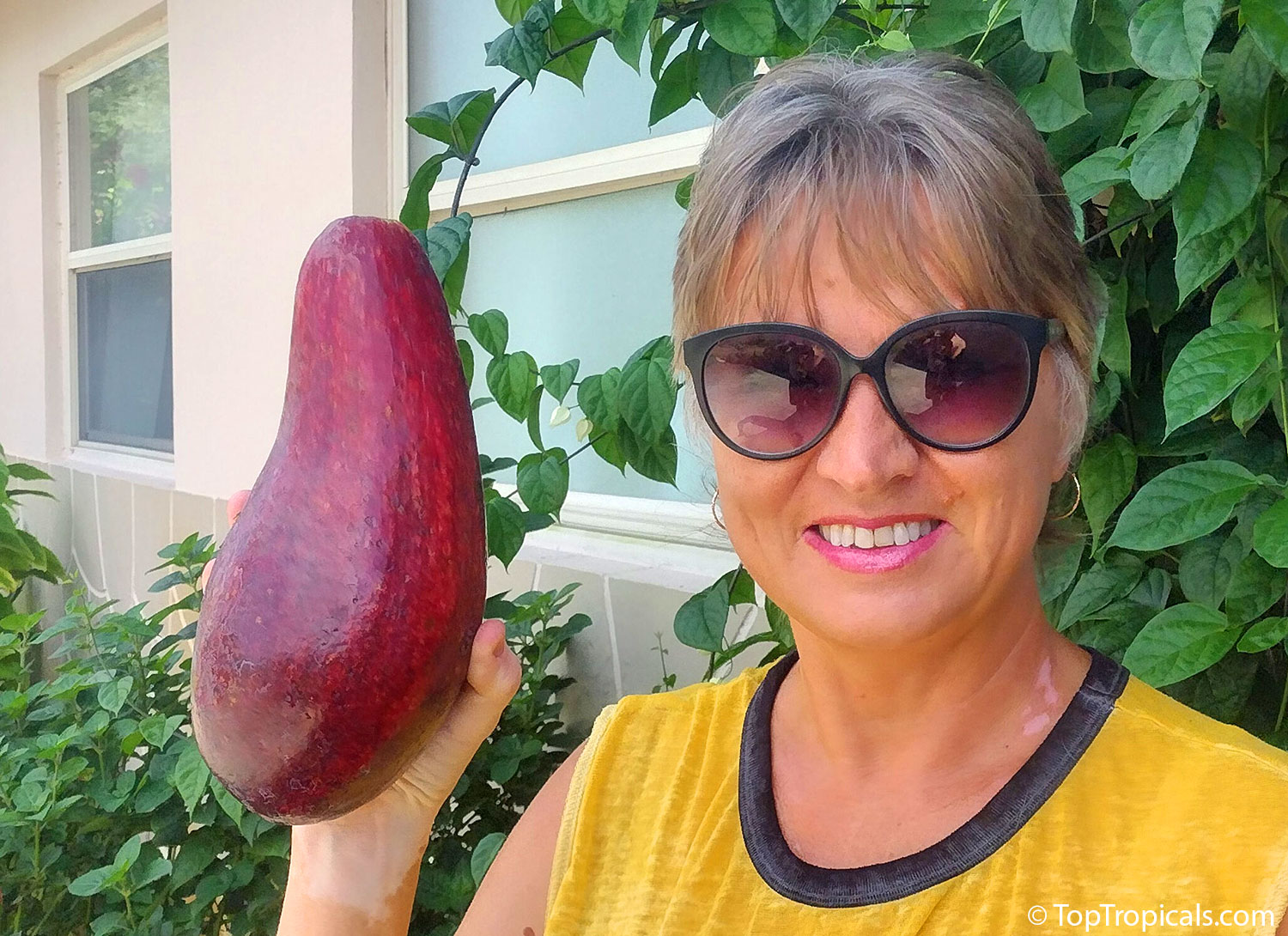
What is the basic classification of avocados?
Avocado varieties have a wide range of characteristics, encompassing variations in flavor, texture, and appearance. It is essential to understand that the classification of avocados into the defined types mentioned below provides a simplified framework. In reality, some hybrids may possess attributes that place them in between these established categories.
- By flowering pattern and pollination behavior: Type A and Type B
- By origin: Mexican, Guatemalan, and West Indian (along with many hybrids)
- By fruit appearance, texture and taste: Guacamole Avocado (“Smooth skin”) and Snack Avocado ("California" or "Hass" type)
- By growth habit: full size trees, free branching or upright, semi-dwarf low growing, and dwarf (“condo avocados”).
- By cold hardiness: Cold sensitive (requiring frost-free conditions), cold tolerant (able to withstand light frost), and cold hardy (capable of enduring some hard freezes once established).
- By ripening season: Early or Spring (March-June), Mid or Summer (July-September), and Late or Fall-Winter (October-February).
Understanding these classifications will help you make informed choices when selecting avocado varieties for your garden or culinary preferences.
Each category offers a unique set of qualities that can enhance your avocado-growing and tasting experience. Hybrids can exhibit characteristics that fall between these categories.
What are the most popular Avocado varieties?
In this guide we will go over a list of the most popular avocado varieties in cultivation, all of which are excellent choices for home gardens; we will delve into the details of each variety's characteristics as outlined in Avocado Variety Guide below.
For printing, see PDF file.
| Variety | Min temp | Size | Origin | Fruit size | Color | Type | Guacamole or Snack | Season | Shape |
|---|---|---|---|---|---|---|---|---|---|
| Anise | 20°F | 30' x 20' | Mexican | 12 - 16 oz | green/black | B | S | July - September | Pear |
| Bacon | 20°F | 30' x 20' | Mexican | 12 - 16 oz | green | B | S | November - March | Oval |
| Bernecker | 30°F | 30' x 20' | West Indian | 24 - 40 oz | green | A | G | July - September | Pear |
| Beta | 30°F | 30' x 20' | Guat x W. Indian | 14 - 24 oz | green | B | G | August - October | Lg. Oval |
| Black Prince | 30°F | 30' x 20' | Guatemala | 16 - 32 oz | green | A | G | August-September | Oval |
| Booth 8 | 30°F | 30' x 20' | Guatemala | 14 - 22 oz | Dk green | B | G | September - November | Oval |
| Brazos Belle (Wilma) | 15°F | 25' x 25' | Mexican | 6 - 8 oz | black | B | S | October-November | Pear |
| Brogdon (Brogden) | 20°F | 30' x 20' | x Mex | 7 - 20 oz | black | B | S | Winter Haven, FL Sept.-Oct. | Pear |
| Buck | 20°F | 30' x 20' | Guat x Mex | 16 - 28 oz | green | B | S | March - May | Oval/Pear |
| Catalina | 30°F | 30' x 20' | Cuba | 16 - 32 oz | green | A | G | August - October | Long Pear |
| Choquette | 25°F | 30' x 20' | Guat x W. Indian | 18 - 40oz | green | A | G | October – February | Oval |
| Day | 20°F | 30' x 20' | Guat x W. Indian | 8 - 16 oz | green | A | G | July - September | Pear |
| Donnie (Doni) | 35°F | 30' x 20' | West Indian | 12 - 20oz | green | A | G | May – August | Pear |
| Ettinger | 30°F | Upright | Guat x Mex | 9 - 16 oz | green | B | S | October - January | Pear |
| Fantastic | 15°F | 25' x 25' | Texas | 6 - 8 oz | green | A | S | August - October | Pear |
| Florida Hass (Haas) | 30°F | 30' x 20' | Mexican | 4 - 12 oz | green | A | S | July - September | Oval |
| Fuerte | 20°F | 15' x 20' | Guat x Mex | 12 - 14 oz | green/black | B | S | November - June | Pear |
| Hall | 25°F | 30' x 20' | Guat x Mex | 24 - 30 oz | green | B | S | October - December | Pear |
| Hardee Red | 25°F | 30' x 20' | Florida | 16-32 oz | green/red | B | S | July - August | Long Pear |
| Hialeah Red | 35°F | 30' x 20' | West Indian | 16-32 oz | red | B | G | August - September | Oval |
| Joey | 15°F | 30' x 20' | Gutemala | 6 - 10 oz | purple/black | B | S | September - October | Pear |
| Kampong (Sushi) | 30°F | 60' x 40' | Guat x W. Indian | 20-32 oz | green | B | S | December - March | Ovoid |
| Lila (Opal) | 15°F | 25' x 15' | Mexican | 6 x 12 oz | green | A | S | July - September | Pear |
| Loretta | 30°F | 30' x 20' | Guat x W. Indian | 30 - 40 oz | green | A | G | August - September | Oval |
| Lula | 25°F | 30' x 20' | Guat x W. Indian | 14 - 24 oz | green | A | G | October - January | Pear |
| Marcus Pumpkin | 20°F | 30' x 30' | Guat x W. Indian | 18 - 48 oz | green | B | S | September - November | Round |
| Maria Black | 30°F | 30' x 20' | Guat x Mex | 20-32 oz | black | B | G | November - January | Ovoid |
| Mexicola | 20°F | 25 x 15 | Mexican | 4 - 7 oz | black | A | S | August - October | Ovoid |
| Mexicola Grande | 20°F | 30' x 20' | Mexican | 6 - 10 oz | black | A | S | August - October | Pear |
| Miguel | 35°F | 30' x 20' | Guat x W. Indian | 18- 32 oz | green | B | G | July - August | Ovoid |
| Monroe | 30°F | Upright | Guat x W. Indian | 16 - 24 oz | green | B | G | November - January | Ovoid |
| Nishikawa | 35°F | 30' x 20' | Gutemala | 18 - 24 oz | green/black | B | S | October - December | Pear |
| Oro Negro | 25°F | 30' x 20' | Florida | 16 - 32 oz | black | B | S | November - January | Pear |
| Pollock | 35°F | 30' x 20' | West Indian | 16 - 24 oz | green | B | G | June - August | Pear |
| Poncho (Pancho) | 15°F | 25' x 15' | West Indian | 6–8 oz | green/red | B | S | July - September | Pear |
| Red Russell | 35°F | 25' x 15' | W. Indian | 16 - 24 oz | red | A | G | July, August | Club |
| Reed | 35°F | 35' upright | Guatemala | 12 - 24 oz | green | A | G | November - February | Round |
| Russell | 35°F | 25' x 15' | W. Indian | 16 - 24 oz | green | A | G | July, August | Club |
| Simmonds | 35°F | 30' x 20' | W. Indian | 16 - 24 oz | green | A | G | June - August | Ovoid |
| Thomson Red | 30°F | 30' x 20' | Guat x Mex | 20 - 40 oz | red | B | S | September - November | Pear |
| Tonnage | 30°F | 30' x 20' | Guatemala | 14 - 24 oz | green | B | G | October - November | Pear |
| Ulala (Oh La La, Super Hass) | 20°F | 25' x 15' | Louisiana | 6-10 oz | purple/black | A | S | November - February | Pear |
| Waldin | 35°F | 30' x 20' | W. Indian | 14 - 28 oz | green | A | G | August - October | Ovoid |
| Winter Mexican | 20°F | 40' x 25' | Guat x Mex | 12 - 18 oz | Dk green | B | S | December - January | Pear |
| Wurtz (True Dwarf) | 25°F | 12' x 8' | Guat x Mex | 6 - 12 oz | Dk green | A&B | S | May - September | Pear |
| Yamagata | 30°F | 25' x 15' | Guatemala | 16 - 28 oz | green | B | S | March - July | Pear |
What is avocado cold hardiness?
Many varieties of avocado are hardy to some freeze once established. Various factors can influence a tree hardiness, such as the duration of cold periods, sun exposure, wind protection, and the overall health of the tree, which is influenced by the fertilization regimen during the active growth season.
Avocado trees, in general, are quite sensitive to freezing temperatures, thriving best in tropical to subtropical climates. However, there are some hardy exceptions, with certain hybrids capable of enduring even a hard freeze once the trees are established.
The most cold-hardy avocados are of Mexican origin. Some of these varieties are known to thrive in regions like San Antonio, Texas (USDA temperature zone 8b), where temperatures can drop significantly. While avocado trees in such areas still may be damaged by hard freezes, they often survive cold snaps as low as 10F. As a rule of thumb, the most cold-hardy varieties, once established, can endure short periods (3-6 hours) of freeze as low as 15F without suffering significant harm.
Nevertheless, it's crucial to keep in mind that the exact cold tolerance of avocado trees can vary depending on several factors, including tree maturity, the duration of cold exposure, and local microclimates. To safeguard your avocado trees during extreme cold events, closely monitor weather conditions and consider protective measures.
Find the cold hardiness information for different cultivars in Avocado Variety Guide. These minimum temperature ratings are approximate and are more reliable for established trees.
How to protect avocado from cold?
Important for cold protection:
1. Bigger plants
2. Wind protection
3. Good fertilizer
4. Adequate water
Some important considerations for avocado cold protection:
- Protection for Small Plants: Young avocado plants are particularly vulnerable to cold weather. When a freeze is anticipated, mound mulch around the trunk for added protection and cover the tree with a blanket. In severe freezes, consider using a string of Christmas lights or a small heater beneath the covers (assuming safety measures). Mature trees are more resilient and may not require this extra protection.
- Plant Location and Wind: Cold tolerance depends on several factors, including how close the tree is planted to a building and its exposure to winds. Place avocado trees in locations that offer protection from cold winds, which can be more damaging than the cold temperature itself. Typically, the warmest location in a residential landscape is on the south or southeast side of the house.
- Health and Care: Healthy, well-maintained plants, with regular fertilizing program throughout the year that includes plant hormones and boosters (such as SUNSHINE Boosters™) tend to be more cold-tolerant.
- Humidity: Generally, plants from regions with dry, low-humidity winters are hardier. For example, a plant accustomed to the dry climate of Texas might withstand temperatures of 10-15F but may only tolerate 15-20F in the wetter climate of the South East Coast. While avocado trees need regular irrigation, they require very little water during cold spells and are sensitive to over-watering in winter. Adequate drainage is crucial when planting avocado trees. When planting an avocado tree, create a mound of soil and plant the tree on top of it.
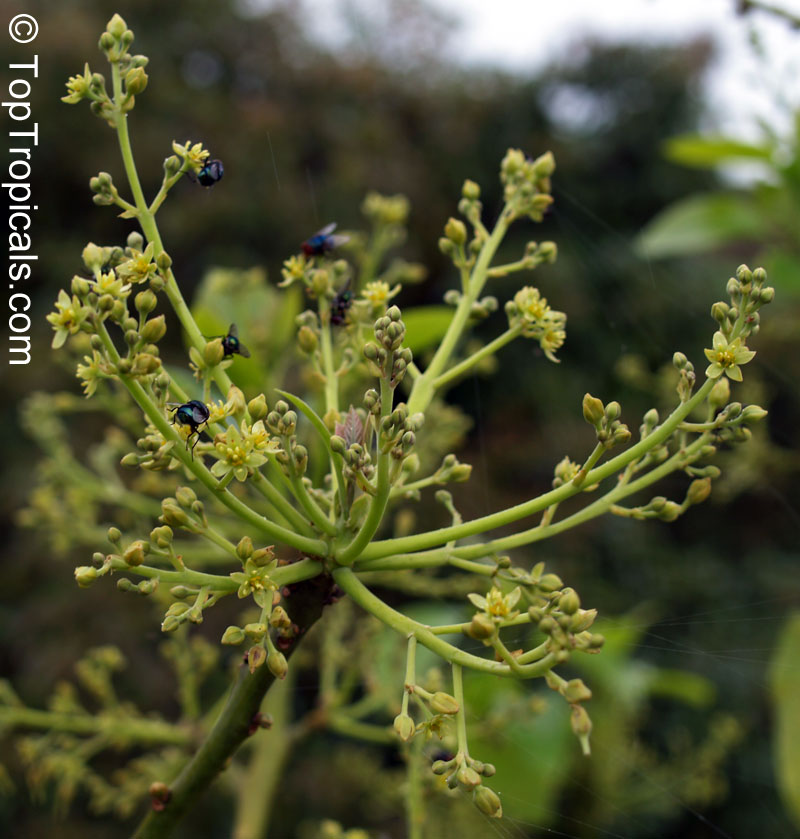
What is avocado flowering pattern: type A or type B?
The classification into Type A and Type B pertains to the flowering and pollination behavior of avocado varieties rather than their physical attributes.
- Type A: These avocados have flowers that open as females on the morning of the first day and then close. On the afternoon of the second day, the flowers reopen as males. This flowering pattern allows Type A avocados to be self-pollinating and also enables cross-pollination with other avocado trees.
- Type B: In contrast, Type B avocados have flowers that open as females on the afternoon of the first day and then close. On the morning of the second day, the flowers reopen as males. Just like Type A, Type B avocados exhibit both male and female functions at different times, facilitating both self-pollination and cross-pollination.
Type A and Type B are only important for large yield.
In general, every avocado tree is self-fertile, meaning it can produce some fruit with its own pollen and doesn't necessarily require a second tree for pollination.
However, when both types of trees are grown in proximity to each other, their overlapping flowering patterns significantly enhance the chances of cross-pollination. This can lead to an improved fruit set and higher yield, making it especially important for commercial production and, to a lesser extent, for home growers. To aid in pollination, maintaining a diverse and healthy population of bees and other pollinators in your garden is also crucial.
Therefore, it's advisable to plant different varieties of avocado in your garden - the more, the merrier! The greater the diversity of avocado trees with overlapping flowering periods, the better your crop is likely to be. If you're growing an avocado tree in a pot without other avocados nearby, it becomes helpful to have more than one tree with different flowering patterns (A and B) to increase yield in your container garden.
Planting both A and B types helps to get bigger crops!
What are most popular Type A avocado varieties?
Bernecker, Black Prince, Catalina, Choquette, Day, Donnie (Doni), Fantastic, Florida Hass (Haas), Lila (Opal), Loretta, Lula, Mexicola, Mexicola Grande, Red Russell, Reed, Russell, Simmonds, Ulala (Oh La La, Super Hass) , Waldin, Wurtz (Dual Type, A&B)
What are most popular Type B avocado varieties?
Anise, Bacon, Beta, Booth 8, Brazos Belle (Wilma), Brogdon (Brogden), Buck, Ettinger, Fuerte, Hall, Hardee Red, Hialeah Red, Joey, Kampong (Sushi), Marcus Pumpkin, Maria Black, Miguel, Monroe, Nishikawa, Oro Negro, Pollock, Poncho (Pancho), Thomson Red, Tonnage, Winter Mexican, Wurtz (Dual Type, A&B), Yamagata
What is avocado classification based on origin?
Avocado varieties can be categorized into three primary origin types: Mexican, Guatemalan, and West Indian. These classifications are based on the geographic regions where these avocados originate and are known for their distinct characteristics in terms of size, skin texture, flavor, butter (oil, fat) content, and water content.
Numerous hybrids result from crosses between these three fundamental types.
- Mexican: Avocado varieties with Mexican origins are typically characterized by their smaller size, thin skin, and rich, flavorful taste. They often boast a higher butter content and are renowned for their diverse flavors and textures. Mexican avocado varieties produce smaller fruits, typically weighing between 6 to 10 ounces, and have paper-thin skins that transform from green to glossy-dark green or black when ripe. The tender skin clings closely to the flesh. The flesh itself contains a high butter content, up to 30%. These trees tend to be more cold-resistant, making them suitable for regions with cooler climates.
- Guatemalan: Avocado varieties originating from Guatemala typically exhibit larger fruit size and thicker skin compared to Mexican avocados. They are characterized by a milder flavor profile and a higher butter content. Guatemalan avocados are prized for their creamy texture. These varieties produce medium-sized, ovoid, or pear-shaped fruits with pebbled green skin that matures to a blackish-green when ripe. Guatemalan avocados are primarily harvested during the winter and spring seasons. Their skin can vary from thin to very thick and may have a granular or gritty texture. The flesh of Guatemalan avocados is rich in flavor and contains a relatively high butter content. These avocados are grown in both Florida and California, making them accessible to a wide range of avocado enthusiasts.
- West Indian: Avocado varieties originating from West Indian regions are commonly found in tropical climates and are distinguished by their larger fruit size, smooth skin, and higher water content. These avocados typically contain a lower butter content compared to Mexican and Guatemalan varieties. West Indian avocado trees produce substantial, smooth, round fruits with glossy green skin, and some of these fruits can weigh up to 2 pounds! They typically ripen during the summer or fall. The skin of West Indian avocados is leathery, pliable, and non-granular, with certain varieties even displaying red-colored fruit skin. Unlike Mexican avocados, the leaves of West Indian avocado trees are not aromatic. These avocados are primarily grown in regions such as Florida, the West Indies, Bahamas, Bermuda, and various tropical areas around the Old World, but they are not commonly cultivated in California.
What are popular Mexican avocado varieties?
Popular Mexican avocado varieties include: Anise, Bacon, Brazos Belle (Wilma), Brogdon (Brogden), Fantastic, Florida Hass (Haas), Lila (Opal), Mexicola, Mexicola Grande, Ulala (Oh La La, Super Hass).
Hybrids Mexican x Guatemalan: Winter Mexican, Buck, Wurtz* (True Dwarf), Maria Black, Fuerte, Hall, Ettinger, Thomson Red.
What are popular Guatemalian avocado varities?
Popular Guatemalan avocado varieties include: Black Prince, Booth 8, Joey, Nishikawa, Reed, Tonnage, Yamagata
Hybrids Mexican x Guatemalan: Winter Mexican, Buck, Wurtz* (True Dwarf), Maria Black, Fuerte, Hall, Ettinger, Thomson Red
Hybrids of West Iundian and Guatemalan: Beta, Catalina, Choquette, Day, Hardee Red, Kampong (Sushi), Loretta, Lula, Marcus Pumpkin, Miguel, Monroe, Oro Negro.
What are popular West Indian avocado varities?
West Indian avocado varieties include: Bernecker, Donnie (Doni), Hialeah Red, Pollock, Poncho (Pancho), Red Russell, Russell, Simmonds, Waldin
Florida originated varieties: Catalina, Hardee Red.
Hybrids of West Iundian and Guatemalan: Beta, Catalina, Choquette, Day, Hardee Red, Kampong (Sushi), Loretta, Lula, Marcus Pumpkin, Miguel, Monroe, Oro Negro.
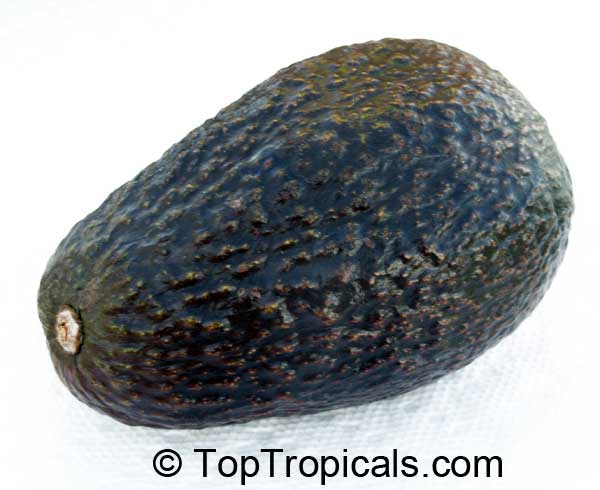
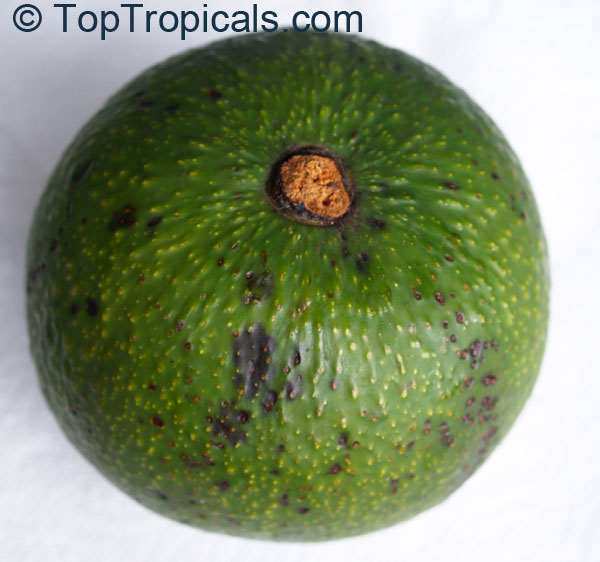
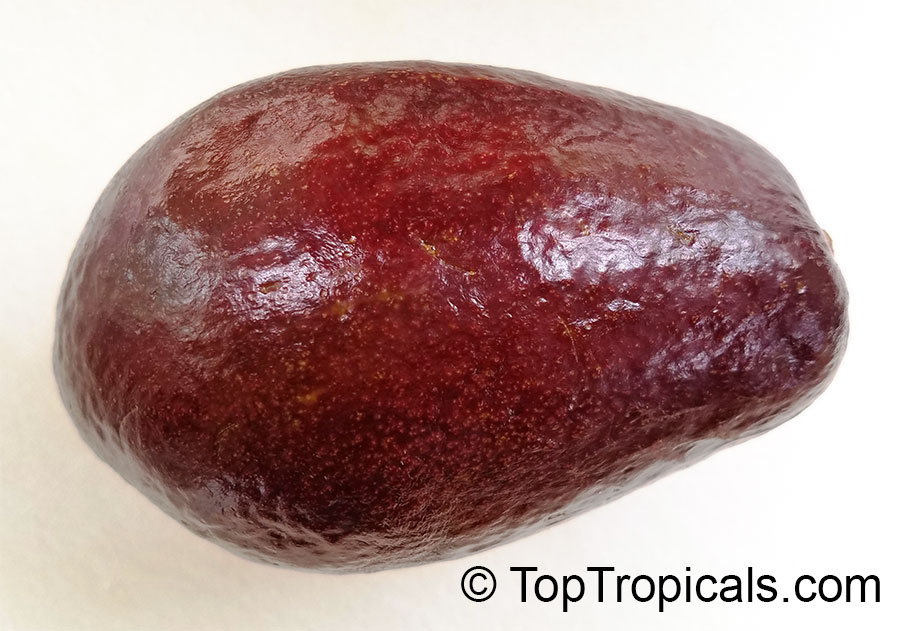
Guacamole or Snack?
Avocado butter content varies in different hybrids. Both “black” or “green” can be super tasty!
Avocado fruits vary in their butter content. Many Mexican avocado types tend to have a higher butter content, while certain West Indian varieties, often larger in size with thinner skin, can be less "buttery" and more "meaty". People often use these for cooking, especially in making guacamole and salad dressings because of their large size. However, it's important to note that this isn't a strict rule, and avocado varieties from the same origin can vary in their “butteriness”. To choose the right variety for your taste and cooking needs, refer to the information provided in the Avocado Variety Guide.
Perfect guacamole varieties are marked with the letter G in the table. If you enjoy eating avocados as a snack, varieties marked with S will introduce you to a delightful range of flavors. Just remember that this classification is very relative and both types can be equally delicious and used in both cooking or snacks! To enjoy the full palette of what avocado fruit can offer, just add more avocado trees to your garden.
What is Guacamole "Florida type" avocado?
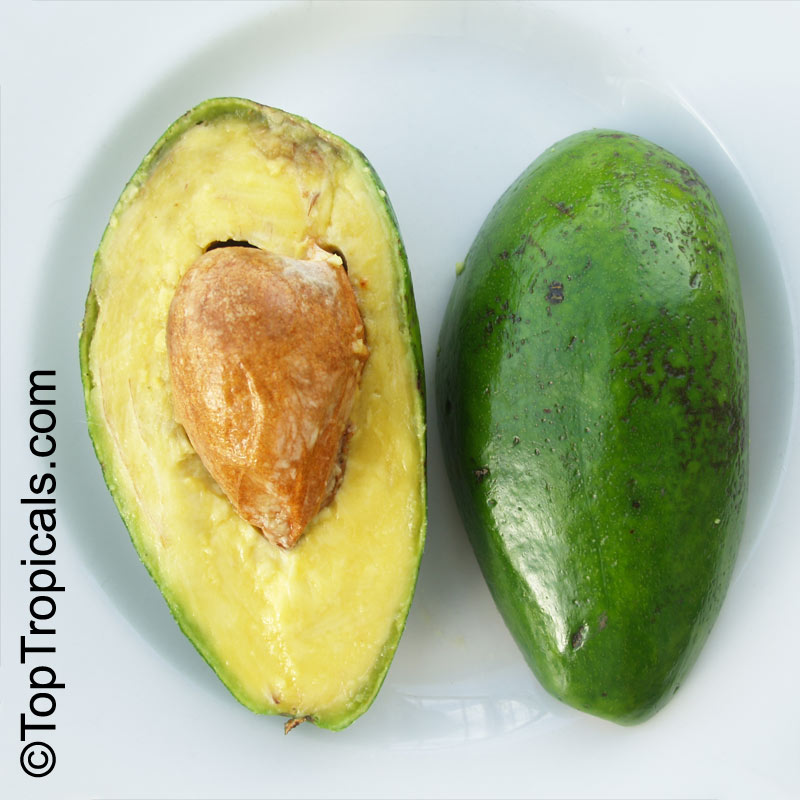
The "Florida" type, often referred to as "Smooth skin" avocados, are primarily of West Indian origin, with some being Guatemalan hybrids. These avocados are generally larger in size, have smooth green skin, and a lower content of butter. The generous amount of pulp in these avocados makes them excellent for crafting delicious guacamoles and healthy salad dressings.
Popular Guacamole varietes: Bernecker, Beta, Black Prince, Booth 8, Catalina, Choquette, Day, Donnie (Doni), Ettinger, Hialeah Red, Loretta, Lula, Maria Black, Miguel, Monroe, Pollock, Red Russell, Reed, Russell, Simmonds, Tonnage, Waldin
What is Snack "California type" or "Hass type" avocado?
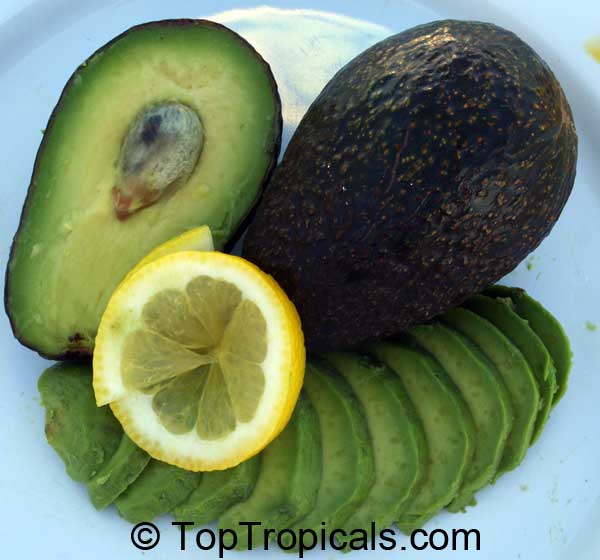
The"California" type also called "Hass" type avocados are exemplified by the Hass variety, which is the most widely recognized and commercially available avocado in California and many other regions. The flesh of Hass avocados typically boasts a rich, nutty flavor and a creamy texture. These avocados are known for their smaller size, bumpy skin (which turns dark green or black when ripe), and high butter content, making them perfect for snacking. They are represented by avocados of Mexican origin and their hybrids with Guatemalan varieties.
Popular varietes: Anise, Bacon, Brazos Belle (Wilma), Brogdon (Brogden), Buck, Fantastic, Florida Hass (Haas), Fuerte, Hall, Hardee Red, Joey, Kampong (Sushi), Lila (Opal), Marcus Pumpkin, Mexicola, Mexicola Grande, Nishikawa, Oro Negro, Poncho (Pancho), Thomson Red, Ulala (Oh La La, Super Hass), Winter Mexican, Wurtz* (True Dwarf), Yamagata
*What is so unique about Wurtz avocado?
Wurtz is a true dwarf variety, making it well-suited for smaller spaces and container gardening.
The Wurtz avocado (also recognized as "Little Cado" or "Mexicola Dwarf" ) is interestingly classified as a Guatemalan type of avocado, rather than strictly fitting into the Florida or California types. Guatemalan avocados display a slightly different growth pattern and pollination requirement when compared to their Florida and California counterparts.
The Wurtz avocado is distinguished by its small to medium size, smooth green skin, and notably high butter content.
While it may not conform precisely to the Florida or California avocado types, it shares some characteristics with the California type, particularly in terms of its elevated butter content and creamy texture.
In summary, the Wurtz avocado variety is classified as a Guatemalan type but exhibits certain similarities to the California type, primarily in its fruit characteristics. This unique classification offers avocado enthusiasts an intriguing option with its distinctive attributes.
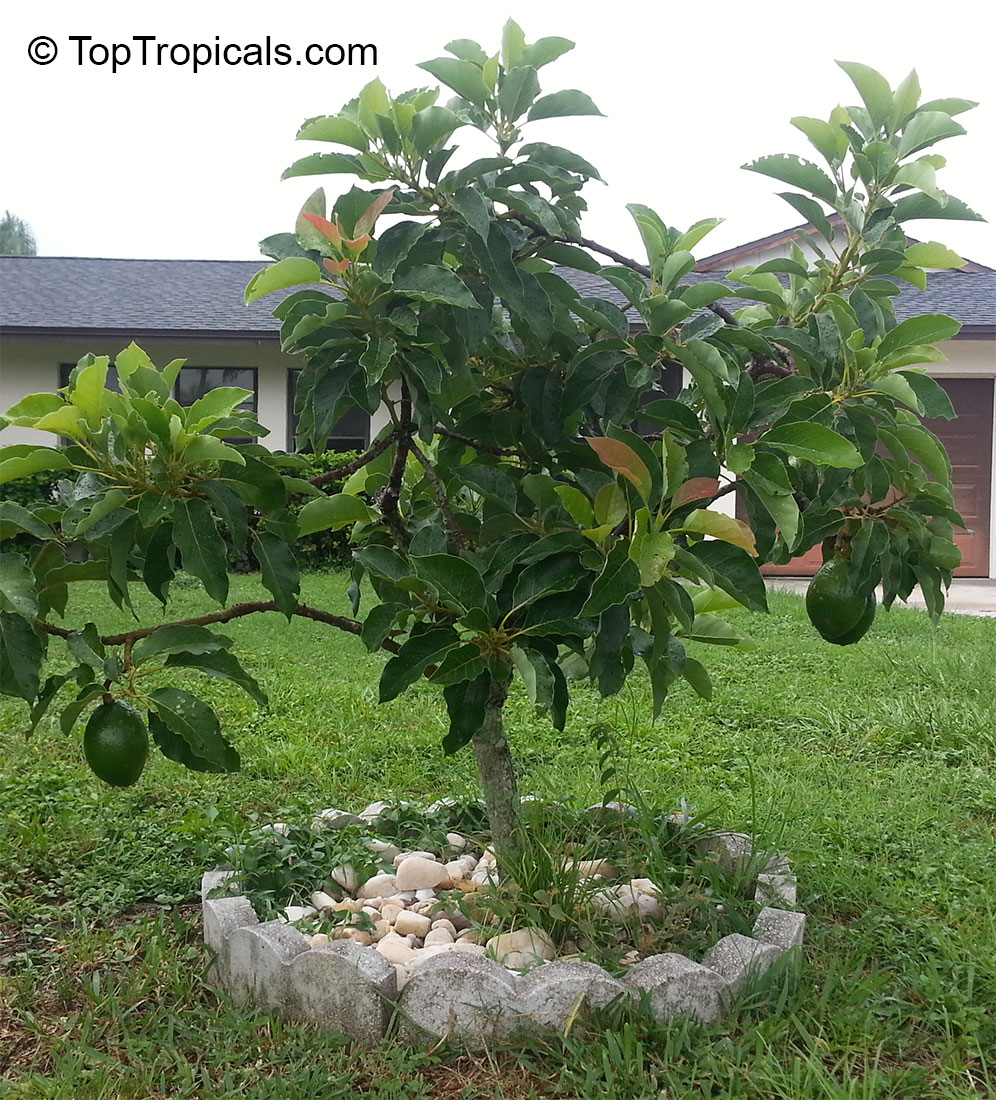
What is Condo Avocado?
It's a universal desire among rare fruit growers to collect as many avocado tree varieties as possible, but the reality often sets limits on our available space. However, there's no need to fret! Several compact avocado tree varieties are well-suited for smaller spaces, container gardening, and even indoor cultivation! They have naturally smaller sizes and more compact growth habits compared to standard avocado trees.
Here are just a few remarkable “condo” avocados that thrive in containers:
- Wurtz (Little Cado): Wurtz is a true dwarf avocado tree, making it an excellent choice for confined spaces or container gardening. Its compact size allows it to flourish even indoors.
- Fuerte: Although not a strict dwarf, the Fuerte avocado tree is considered semi-dwarf. Its more manageable growth habit makes it suitable for smaller spaces, and it can be cultivated in containers.
- Joey: While Joey avocados are not classified as dwarf trees, they possess a more compact growth habit compared to some other avocado varieties. With regular trimming and care, they can be maintained as smaller trees, making them a viable option for limited spaces.
Condo avocado varieties offer a practical solution for gardeners with space constraints, allowing them to enjoy the beauty and benefits of avocado trees in small gardens, on the porch, or balcony.
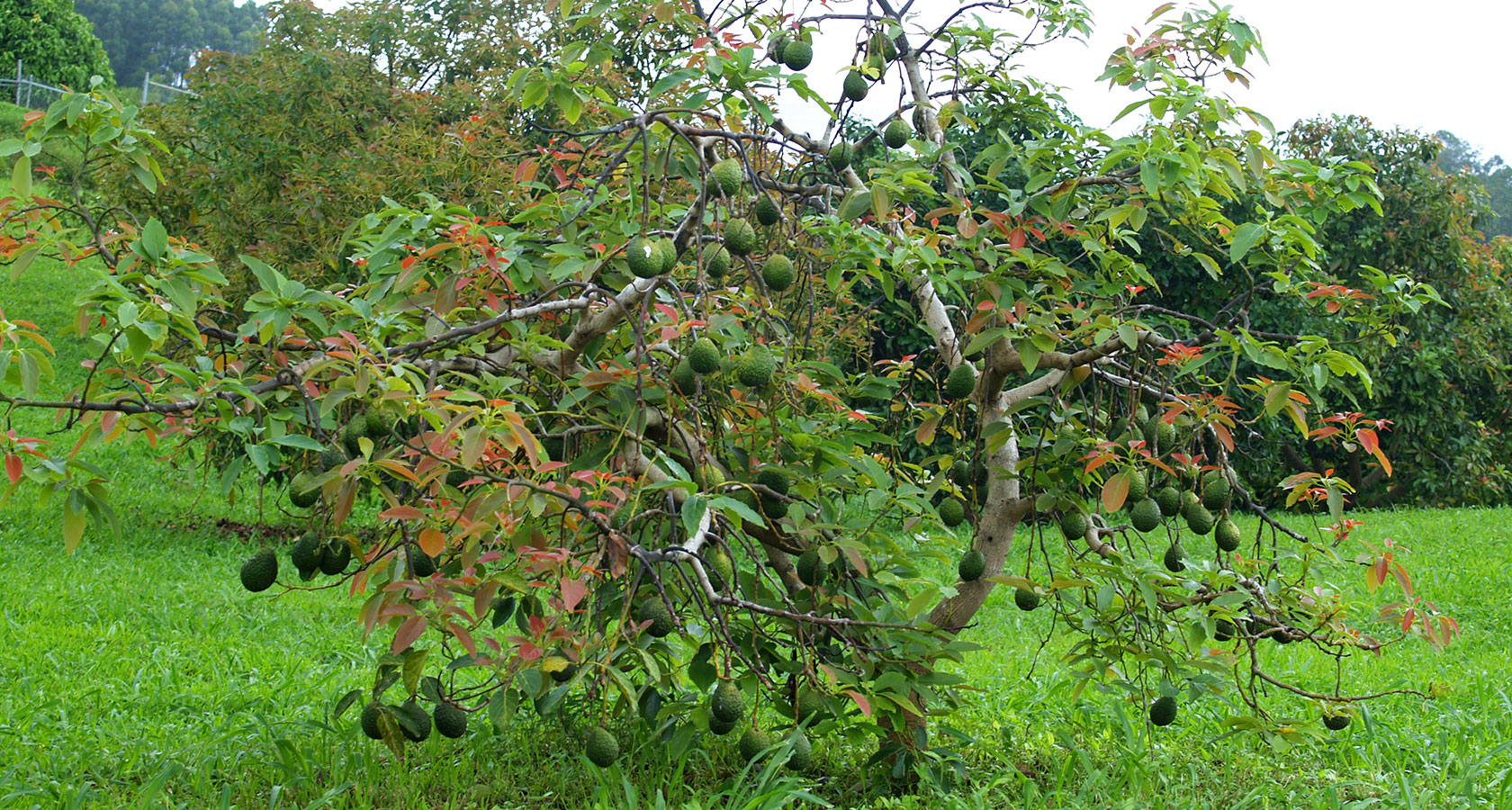
When is avocado ripening season?
It is possible to have a Year-Round Avocado Feast? As evident from the Avocado Variety Guide, avocados exhibit diverse flowering and ripening times throughout the year, and they can be categorized into three primary seasons:
- Early, or Spring (March-June)
- Mid, or Summer (July-September)
- Late, or Fall-Winter (October-February)
This diversity is great news for avocado enthusiasts! If you love avocado and desire a continuous supply of fresh fruit from your own garden, you can achieve just that by planting several avocado trees of different varieties.
By carefully selecting cultivars that ripen in different seasons, you can relish the delicious and nutritious bounty of avocados year-round, straight from your own garden!
FAQ and best avocado picks
Q: What is the best avocado variety for eating out of hand?
A: Our favorite fresh delicacy Avos are: Fantastic, Ulala (Super Hass), Brogdon, Bacon, Florida Hass.
Q: What are the most exotic avocado trees for plant collectors?
A: Thomson Red (huge purple fruit, looks like an egg plant!), Marcus Pumpkin (big and round), Fuerte (semi-dwarf, fits every yard), Anise (anise-smelling leaves).
Q: I live in Central Florida, what are cold hardy winners?
A: Brazos Belle, Day, Fantastic, Joey, Lila.
Q: What are the most popular varieties of all times?
A: Our best sellers that every gardener wants are: Wurtz (dwarf), Winter Mexican, Mexicola, Oro Negro, Ulala.
Q: What are the best producers? I make lots of guacamole.
A: Black Prince, Catalina, Choquette, Lula, Monroe, Tonnage, Simmonds, Waldin
Q: I need a good avocado tree for my Mom's birthday present, what would you recommend? I am not a plant person myself...
A: To be on the safe side, stay with “Condo” varieties if you don't know the details of the future environment for the tree. “Condo” avocados can be grown both in containers or in the ground and are easy to take care of. Wurtz, Fuerte, Joey.
Q: I planted an avocado tree from seed a few years ago. The tree is big and happy, but it never produces fruit. What is wrong with it?
A: Avocado takes several years from a seedling to produce fruit. As with most seedlings, the fruit quality will be a surprise. For faster production and tasty fruit, you need a grafted variety, it will be flowering and producing right away.
